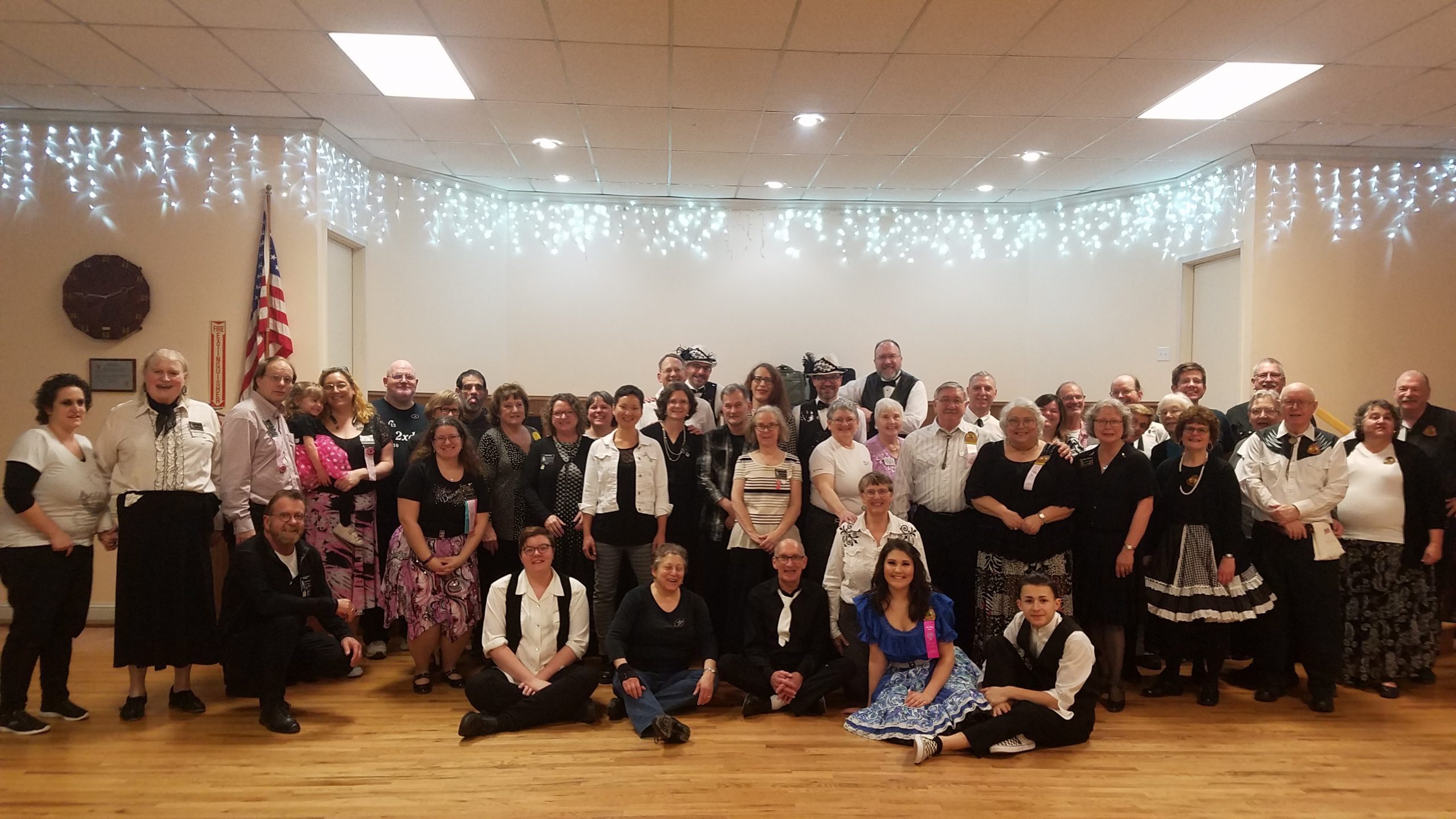You may be wondering "what is gay square dancing?" and "how did you get into that?" The answer for the first question is that it's like straight square dancing but more fun.
From what I can tell, this delightful offshoot of modern western square dancing began in the mid 1970s. A 2019 article about Portland's Gender Neutral Square Dance states that:
The main differences between gay square dancing and straight square dancing are that you don't need to bring a partner, there isn't a dress code, you can dance whichever role you want regardless of gender, and for advanced dancers there's special fluff (extra flourishes added to certain moves, my favorite example being on the call "Spin the top" saying "spank the bottom" or "that's no top" while doing the move). For more history and info, check out the IAGSDC Wiki
I started learning how to square dance in late summer of 2019 when I'd just moved to Portland and was looking for fun activities to do on meetup. I found the Rosetown Ramblers and went to a taste of square dancing event. In order to be able to square dance you have to learn all the calls for the level you're dancing at, so I enrolled myself in fall courses and learned all 69 mainstream square dance calls from the lead/boy/gent/lark position. I had started learning these calls from the follow/girl/lady/sparrow position when Covid-19 hit and we had to stop dancing but when we are able to safely dance again I want to finish learning those and move on to higher levels of square dance. Mainstream is the basics (69 calls), after that is Plus (31 calls), Advanced 1 (46 calls and concepts), Advanced 2 (35 calls and concepts), Challenge 1 (79 calls and concepts), Challenge 2 (86 calls and concepts), Challenge 3 (83 calls and concepts), Challenge 4/5 (varies but in total they know about 1000 calls and 100 concepts).
The last monthly square dance I attended was the Black & White Ball in January of 2020. I'm sitting the furthest left on the floor in the picture below.
